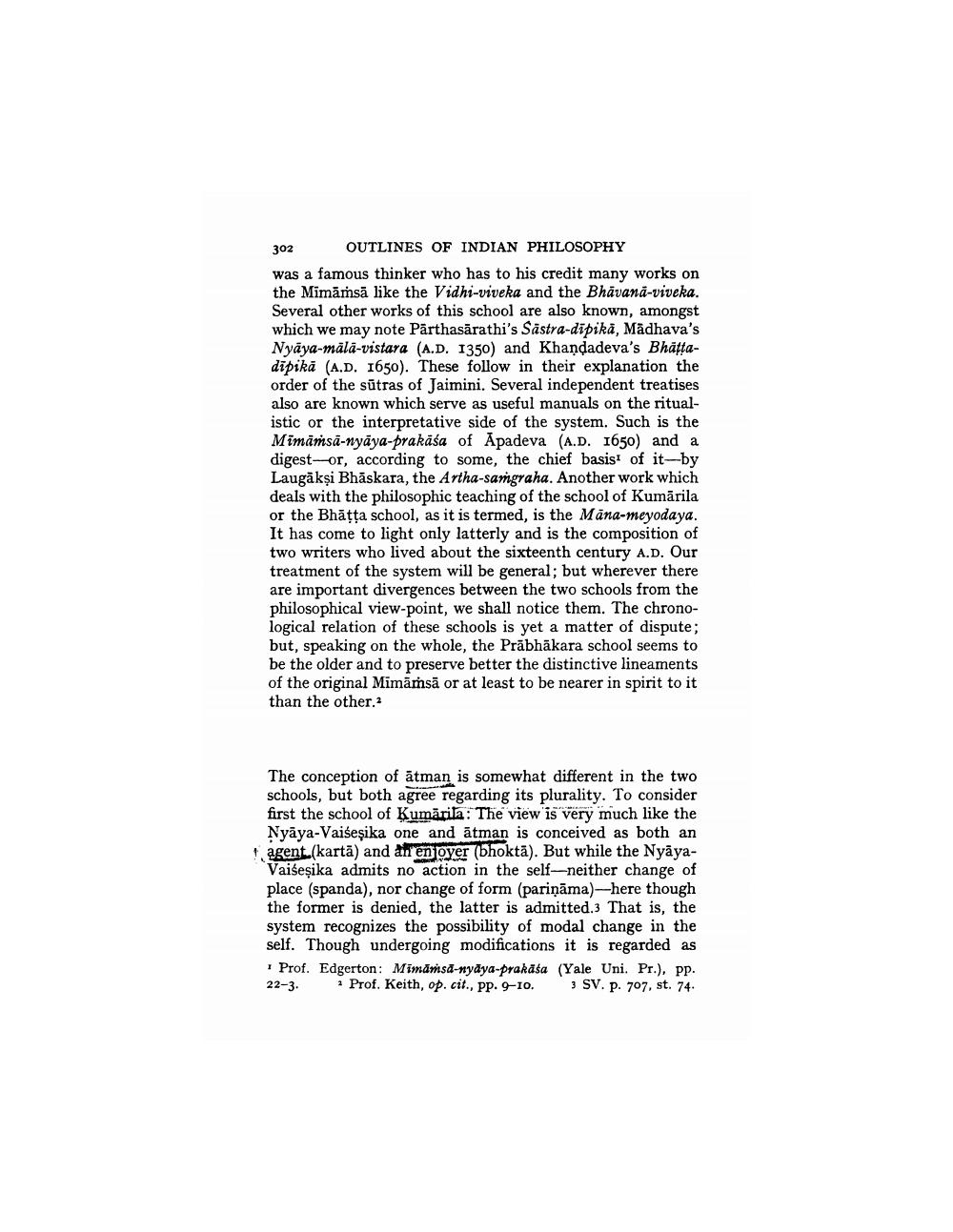________________
302
OUTLINES OF INDIAN PHILOSOPHY
was a famous thinker who has to his credit many works on the Mimāmsā like the Vidhi-viveka and the Bhavana-viveka. Several other works of this school are also known, amongst which we may note Parthasarathi's Sastra-dipika, Madhava's Nyaya-mala-vistara (A.D. 1350) and Khandadeva's Bhattadipika (A.D. 1650). These follow in their explanation the order of the sutras of Jaimini. Several independent treatises also are known which serve as useful manuals on the ritualistic or the interpretative side of the system. Such is the Mimamsa-nyaya prakasa of Apadeva (A.D. 1650) and a digest-or, according to some, the chief basis of it-by Laugākşi Bhaskara, the Artha-samgraha. Another work which deals with the philosophic teaching of the school of Kumārila or the Bhaṭṭa school, as it is termed, is the Mana-meyodaya. It has come to light only latterly and is the composition of two writers who lived about the sixteenth century A.D. Our treatment of the system will be general; but wherever there are important divergences between the two schools from the philosophical view-point, we shall notice them. The chronological relation of these schools is yet a matter of dispute; but, speaking on the whole, the Prabhakara school seems to be the older and to preserve better the distinctive lineaments of the original Mimämsä or at least to be nearer in spirit to it than the other.2
The conception of atman is somewhat different in the two schools, but both agree regarding its plurality. To consider first the school of Kumarila: The view is very much like the Nyaya-Vaiśeşika one and atman is conceived as both an agent (karta) and an enjoyer (bhokta). But while the NyayaVaiseṣika admits no action in the self-neither change of place (spanda), nor change of form (pariņāma)-here though the former is denied, the latter is admitted.3 That is, the system recognizes the possibility of modal change in the self. Though undergoing modifications it is regarded as Prof. Edgerton: Mimämsä-nyaya-prakāśa (Yale Uni. Pr.), pp. Prof. Keith, op. cit., pp. 9-10. 3 SV. p. 707, st. 74.
22-3.




